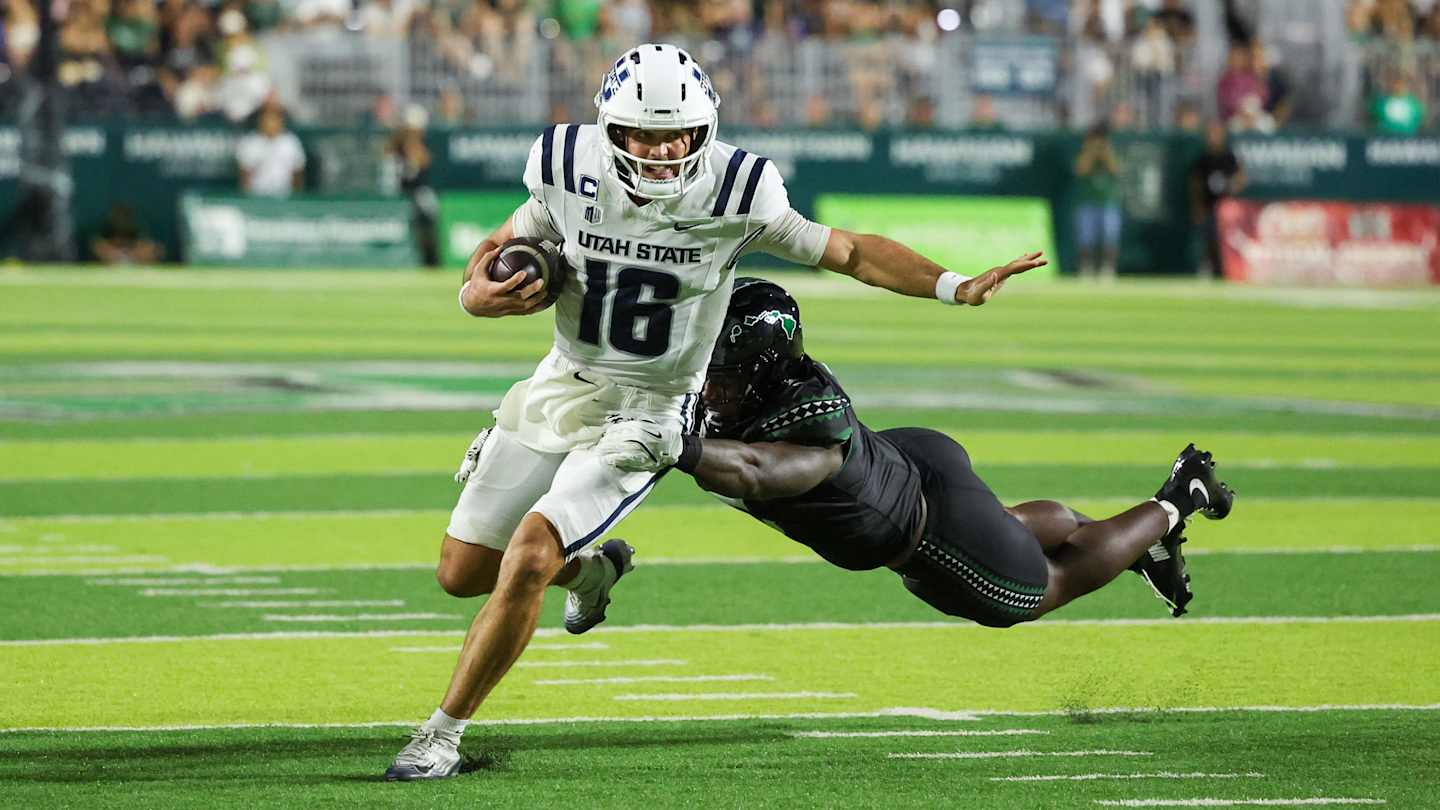The Famous Idaho Potato Bowl has been a frequent postseason destination for Utah State (6-6), which is making its sixth appearance in the game Monday. Coach Bronco Mendenhall brought the Aggies back …
Utah State and Washington State are set to meet in a bowl game for the first time before the Aggies join the Cougars in the new-look Pac-12 in 2026.
The Famous Idaho Potato Bowl has been a frequent postseason destination for Utah State (6-6), which is making its sixth appearance in the game Monday. Coach Bronco Mendenhall brought the Aggies back to a bowl game for the first time since 2023 in his first season in Logan.
Advertisement
After clinching bowl eligibility in the regular-season finale with a win over rival Oregon State, Washington State (6-6) lost first-year coach Jimmy Rogers to Iowa State. Defensive coordinator Jesse Bobbit is in charge as the interim for the bowl game before former Missouri offensive coordinator Kirby Moore takes over as the Cougars’ next coach.
Washington State routed Utah State, 49-28, when these teams met in 2024, but both teams’ personnel — and coaching staffs — have changed considerably since then. The Cougars lead the all-time series, 3-2. More matchups are on the way when these teams become conference mates next fall.
Famous Idaho Potato Bowl: Washington State vs. Utah State Odds, Details
Location: Albertsons Stadium in Boise, Idaho
Kickoff: Monday, Dec. 22 at 2 p.m. ET
TV: ESPN
Spread: Utah State -2.5
Over/Under: 49.5
Announcers: Chuckie Kempf, Darius Walker
Advertisement
Washington State vs. Utah State: Keys to Victory

Washington State quarterback Zevi Eckhaus (4) celebrates with teammates after a touchdown against Oregon State at Martin Stadium on Nov. 29, 2025.© James Snook-Imagn Images
Why Washington State Will Win
The Cougars might be a better team than their record would indicate. Washington State lost by three on the road to Ole Miss and James Madison, two College Football Playoff teams, and by two at ACC runner-up Virginia. There’s nothing necessarily flashy about this team, but it’s sound on both sides of the ball.
Quarterback Zevi Eckhaus added another element to the offense when he took over as the starter. Eckhaus has eight rushing touchdowns in 10 games, and with running back Kirby Vorhees in the transfer portal, he’s the team’s top rusher. The Cougars’ passing attack doesn’t create many explosive plays as Eckhaus’ 6.7 yards per attempt is one of the lowest marks in the FBS. But he has a strong connection with wide receivers Joshua Meredith and Tony Freeman, who account for the lion’s share of Wazzu’s receptions and receiving yards.
Advertisement
Though the Cougars gave up 59 points in back-to-back games to North Texas and Washington back in September, they allow just over 20 points per game on average. Washington State has held six opponents (counting Oregon State twice) to 10 points or fewer and ranks 13th nationally in passing yards allowed. The Cougars don’t create many turnovers, but defensive end Isaac Terrell (seven sacks) leads a potent pass rush.
Why Utah State Will Win
The Aggies have the best player in this game in quarterback Bryson Barnes, who was named to the All-Mountain West Conference second team. Barnes and Co. almost knocked off UNLV and Boise State in the last month of the season, losing by three in double overtime to the Rebels and by one in the regular-season finale to the Broncos.
Advertisement
Barnes is even more of a mobile threat than Eckhaus and a bigger threat as a passer, though he’ll be without his top receiver, Braden Pegan, as he’s in the portal. Without Pegan, Utah State’s offensive production will come from running back Miles Davis, the team’s No. 2 rusher behind Barnes, and wide receiver Brady Boyd, who leads the team with seven receiving touchdowns.
The Aggies finished second in the Mountain West in points per game and third in yards, but their biggest improvements came on defense with Mendenhall’s arrival. Although Utah State is still no defensive juggernaut, linebacker John Miller (109 tackles) and Noah Avinger (three interceptions) earned first team all-conference honors on a team that went blow for blow with the Mountain West’s best.
Famous Idaho Potato Bowl Prediction: Utah State 24, Washington State 21
Don’t expect a shootout on the blue turf with two of the best offensive weapons in this game set to sit out. Barnes will be the difference for the Aggies, whose defense will keep Eckhaus in check to secure Utah State’s first winning season and bowl game win since 2021.
Advertisement
ATS: Utah State -1.5
O/U: Under 49.5
Related: Bowl Game Predictions: College Football Expert Picks for Every Postseason Game in 2025-26
Related: Way-Too-Early Heisman Trophy Contenders for the 2026 College Football Season
Related: Bowl Game Best Bets: ATS Picks for 35 Bowl Games
This story was originally published by Athlon Sports on Dec 21, 2025, where it first appeared in the College Football section. Add Athlon Sports as a Preferred Source by clicking here.
Source: Utah News




























